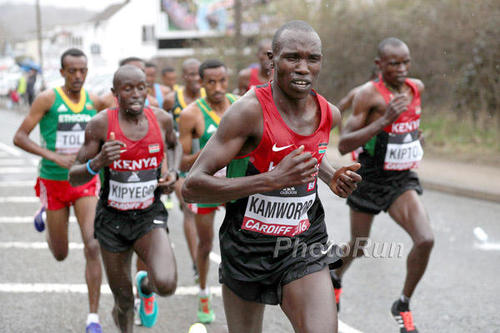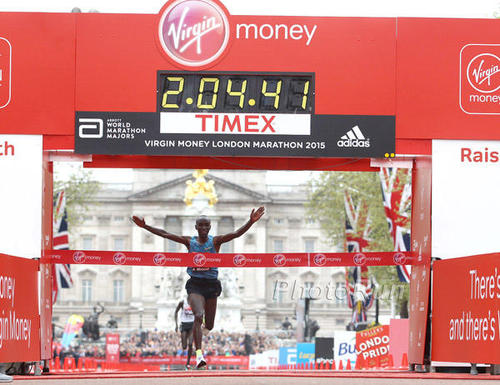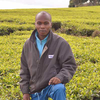 Geoffrey Kamworor, photo by PhotoRun.net
Geoffrey Kamworor, photo by PhotoRun.net
 Eliud Kipchoge, photo by PhotoRun.net
Eliud Kipchoge, photo by PhotoRun.net
Lessons learnt.
Justin Lagat writes about a discussion his coach had with the team regarding the challenges that Geoffrey Kamworor and Eliud Kipchoge overcame in major races. Both had reasons to give up. Neither did.
Lessons learnt the hard way are the best lessons.
Lessons to learn from Geoffrey Kamworor and Eliud Kipchoge, by Justin Lagat
About a week after the Cardiff world half marathon championships, I did not expect to see Kamworor back in training, but there he was at the University of Eldoret waiting to do track intervals with the rest of the group. As he warmed up around the track, he would occasionally stop to say hello to other athletes and almost everyone was requesting to see his bruised knees. I also got a chance to see, and could observe that it was only someone who loved running so much, and have big ambitions, that would turn up for training in his condition.
It had rained heavily the previous night; the track was too muddy for speed workouts and as we assembled to chart a way forward on what to do for the day, coach Richard Metto called Kamworor to step forward. Having earlier seen Kamworor’s knees, he was surprised that he was not injured more than he had thought when he saw him on TV. He asked him to show us his knees again then asked, “Does anyone have anything to say concerning what we saw happen in Cardiff?”
Some athletes said “sorry” to Kamworor while others told him that he was a real fighter and a role model.
“Well, I just asked him to come forward so that some of you can learn something from him. In such a very competitive race, someone else would have just used the fact that he was trampled on the ground and could not continue with the race again. After all, everyone saw that,” said Metto.
“But Kamworor knew what he wanted to achieve in Cardiff. He had a goal for himself to meet and was not just there to please others. Everyone would have understood if he had decided to quit, but then he would not have defended his world title.”
After using the example of Kamworor to let us know that we should be ready to fight through hardships and obstacles to achieve what we want. He pointed at Eliud Kipchoge, who was also standing amongst the athletes.
“Eliud is another example. Despite what happened with his shoes in Berlin, he did not see that as an excuse not to fight hard till the end of the race,” he said.
Having said that, it was time to decide where to train and it did not take long before we all boarded our vehicles and drove for about twenty kilometers to a rough road that has good drainage and is always chosen by athletes during rainy days; the Moiben road. There, we met truck-loads of other athletes who had also came from other training destinations in search of a good place to train.
Athletes from Gianni Demadonna’s camp in Iten had used water bottles to mark some kilometers on the road where Mary Keitany and other athletes were doing some intervals. We separated into two groups. Eliud Kipchoge’s group was going to do a 52 minute fartlek, and that was the group I joined. Kamworor and Brimin Kipruto’s group remained behind. I don’t know what they did because when we came back in about 1hr and 30 minutes later, they were already done with their training.
Author

Since 2013, Justin Lagat has written for RunBlogRun. His weekly column is called A view from Kenya. Justin writes about the world of Kenyan athletics on a weekly basis and during championships, provides us additional insights into the sport.
View all posts




















